-
开放科学(资源服务)标识码(OSID):

-
全球变暖背景下极端降水事件频发[1], 尤其小时极端降水的增加趋势更加显著[2]. 统计显示, 强对流天气是仅次于暴雨洪涝的第二大类气象灾害, 由短时强降水引发的山洪、城市渍涝和地质灾害屡见不鲜, 对人民生命财产造成重大威胁[3]. 如2020年四川冕宁“6.26”突发性暴雨, 最大小时雨量达69.3 mm, 引发山洪灾害, 造成重大人员伤亡[4-5]. 2021年河南郑州“7.20”特大暴雨, 最大小时雨量达201.9 mm, 引发了严重城市内涝, 造成巨大人员伤亡和财产损失[6]. 2021年四川渠县“8.8”特大暴雨, 最大小时雨量达121.3 mm, 导致县内新增地质灾害隐患点38处, 4.3万余人受灾[7]. 近年来, 小时极端降水受到广泛关注, 李建等[8]使用中国465个气象站资料研究了中国小时极端降水阈值, 发现利用百分位法和广义极值分布确定的阈值空间分布较为一致. 一些研究还涉及贵州[9]、陕西[10]、上海[11]、山东[12]和新疆[13]等地, 大都利用国家气象站资料, 采用百分位法, 分析了当地小时极端降水的阈值、日变化以及变化趋势等特征.
四川省地处中国西南部, 地形复杂多样, 主要包括四川盆地、川西高原和攀西地区三大区域, 受东亚季风、南亚季风和高原季风共同影响, 是中国气象灾害的高发区, 尤其强降水引发的地质灾害更为突出[14]. 四川省是我国典型的暴雨多发区之一, 已有大量研究关注到该地区的强降水特征及其形成机理[15-21], 但有关四川省小时极端降水的研究还比较少, 周秋雪等[22]使用1 052个气象站资料, 采用固定阈值法分析了2008-2012年四川省小时降水特征;王彬雁等[23]使用157个气象站资料, 采用概率分布模型, 计算了2010-2016年四川省最大小时降水量的概率分布和重现期;邓彪等[24]使用156个气象站资料, 采用百分位法, 研究了2012-2020年四川省小时极端降水时空分布特征.
小时极端降水前期天气尺度征兆弱、雨强大、强降水时段集中、破坏性强[25], 容易导致四川盆地出现城市内涝[26], 另外川西高原和攀西地区山脉河谷纵横、土质松散, 小时极端降水极易引发山洪、泥石流等次生灾害[27-28]. 掌握四川省小时极端降水的精细时空变化规律, 可增强对复杂地形地区小时强降水的科学认识, 对提高预报准确率、增强气象防灾减灾能力具有重要意义. 本研究利用四川省2 985个气象站点2012-2021年气象资料, 从多尺度时空角度分析四川省小时极端降水的精细化特征.
HTML
-
本研究使用了四川省气象数据探测中心提供的2012-2021年汛期(5-9月)四川省2 985个气象站的小时降水量资料(包括156个国家气象站和2 829个省级气象站), 站点分布如图 1所示. 采用气候极值检测和空间一致性检测方法[29], 对省级气象站小时降水量资料进行了质量控制.
-
当前使用较为广泛的极端降水阈值确定方法有两种, 一种是基于极值理论的参数估计[30-31], 另一种是百分位法[32-33]. 由于降水本身具有很强的空间不均匀性, 极端降水阈值不宜采用固定值, 所以本研究使用了国际上广泛应用的百分位法确定四川省小时极端降水阈值. 百分位法可以给出每个站点独立的极端降水阈值, 但是为了空间可比性, 在整个研究区域内通常统一选取某个百分位数来确定阈值. 百分位数的确定因研究区域的不同而差异较大, 并且主要依靠经验分析和主观判断, 常见的百分位数选择有第95百分位[34]、97百分位[13]、97.5百分位[35]、98百分位[12]、99百分位[9]和99.9百分位[25]等.
图 2为四川省汛期不同百分位(90, 91, 92, 93, 94, 95, 96, 97, 98, 99, 99.5)小时降水的变化特征. 从图 2中可以看到, 从第90百分位到第98百分位, 无论是平均小时降水量还是最大和最小降水量均呈近似线性缓慢增加, 而从第98百分位到第99百分位则出现跳跃式增加, 平均(15.4 mm)、最大(28.2 mm)和最小(4.9 mm)的小时降水量分别增加了4.3, 10.2, 1.0 mm, 即四川省汛期第99百分位的小时降水量表现出了转折性特征, 所以本研究选择第99百分位确定四川省小时极端降水阈值. 本研究采用最小二乘法计算线性趋势, 并进行了显著性水平检验[31].
1.1. 资料来源
1.2. 研究方法
-
图 3为四川省小时极端降水阈值空间分布图, 可以看出, 阈值大小随着地形变化出现了明显的空间差异, 总体上海拔较低的四川盆地阈值最大, 攀西地区次之, 海拔最高的川西高原阈值最小. 四川盆地除盆周山区小时极端降水阈值在10 mm左右, 其余大部均超过15 mm, 并出现两条超20 mm的大值带;川西高原整体的阈值比较均匀, 为5~10mm;攀西地区西南部的小时极端降水阈值为15~25 mm, 其余大部为10 mm左右.
-
首先根据阈值识别出各气象站点2012-2021年汛期所有的小时极端降水并累计得到极端降水量, 然后计算极端降水量与汛期降水总量的比值, 从而得到极端降水贡献率, 贡献率越大说明降水的极端性越强, 其带来的潜在风险可能越大, 反之亦然. 四川省汛期小时极端降水贡献率空间差异较大: 四川盆地北部和西南部为5%~15%, 盆地其余大部为15%~20%, 部分站点超过20%;川西高原大部地区极端降水贡献率为5%~10%, 北部局地在5%以下;攀西地区大部为5%~15%, 中部局地超过15%(图 4). 除盆地北部和西南部、攀西地区的西昌市外, 其余大部地区呈现汛期降水量多(少)则极端降水贡献率大(小)的特点.
-
为了分析小时极端降水在24 h内的分配情况, 分别统计四川盆地、川西高原和攀西地区各时次出现的小时极端降水频次, 然后计算其与总频次的比值, 得到不同时次的小时极端降水频次百分比, 占比越大, 表明相应时次出现小时极端降水的概率越大, 反之则概率越小. 从图 5中可以看到, 四川省不同区域的小时极端降水频次百分比日变化曲线都呈“单峰型”, 但峰值时段有所不同, 其中川西高原的峰值时段出现最早(21: 00-02: 00, 北京时间, 下同), 攀西地区的峰值时段略向后推迟(22: 00-04: 00), 四川盆地的峰值时段出现最晚(00: 00-07: 00).
-
为了分析小时极端降水在汛期各月的分配情况, 分别统计四川盆地、川西高原和攀西地区各月出现小时极端降水的频次, 然后计算其与总频次的比值, 得到不同月份的小时极端降水频次百分比. 图 6显示了四川省不同地区5-9月小时极端降水频次百分比的月变化, 可以看到各地区的小时极端降水都是在7月份发生概率最大, 5月份发生概率最小, 但是不同区域又有所差异, 其中四川盆地汛期接近70%的小时极端降水出现在7-8月, 而川西高原和攀西地区6-8月的小时极端降水出现概率相差不大, 均为20%~30%, 而且6月比8月更容易出现小时极端降水.
-
小时极端降水往往是在一次连续的降水过程中出现的, 为了分析其变化特征, 首先确定小时极端降水过程的定义: 出现连续降水事件(逐小时降水量≥0.1 mm/h), 并且其中至少有1个时次的降水量超过小时极端降水阈值, 降水过程的第一个时刻为开始时间, 最后一个时刻为结束时间, 开始时间与结束时间之间的小时数为持续时间, 最大小时降水量出现的时刻为峰值时间. 分区域统计开始时间分别为00: 00-23: 00, 持续时间分别为1~24 h(持续降水超过24 h的过程极少, 这里忽略不计)的降水过程频次, 并计算其与总频次的比值, 得到不同“开始时间+持续时间”组合的小时极端降水过程占比. 采用同样的方法以峰值时间代替开始时间, 计算相应“峰值时间+持续时间”组合的小时极端降水过程占比, 结果如图 7所示.
四川盆地小时极端降水过程主要分为两类, 一是下午(15: 00-20: 00)开始的2 h短时极端降水过程, 峰值集中出现时间与开始时间基本重合;二是后半夜开始的3~9 h持续极端降水过程, 峰值集中出现时段(22: 00-07: 00)比开始时间集中出现时段(21: 00-05: 00)平均晚1~2 h(图 7a).
川西高原极端降水过程开始时间早晚与持续时间长短的关系不如四川盆地和攀西地区明显, 傍晚(16: 00-20: 00)开始的主要为持续1~5 h的极端降水过程, 其中持续1 h的短时强降水过程较四川盆地和攀西地区明显偏多. 凌晨前后(21: 00-04: 00)开始的极端降水过程往往可以持续3~9 h(图 7b).
攀西地区极端降水过程与四川盆地相似, 其中傍晚至前半夜(17: 00-00: 00)开始的短时极端降水过程持续时间更长(2~4 h), 峰值集中出现时段比开始时间略晚. 后半夜开始的持续极端降水过程持续时间也更长(3~11 h), 攀西地区整体表现出的开始时间越晚持续时间越长的特征更加明显(图 7c).
-
表 1显示了四川省不同区域汛期小时极端降水贡献率的变化趋势, 可以发现不同区域平均的小时极端降水贡献率均呈增加趋势, 其中四川盆地的增加趋势最大(每年增加0.33%), 但是结果无统计学意义, 从空间分布(图 8)上可知, 虽然四川盆地大部呈增加趋势, 局地每年增加超过2%, 但是部分地区减少趋势也比较明显, 尤其是在四川盆地东部和中部的一些地方平均每年减少1%以上. 川西高原平均每年极端降水贡献率增加0.31%, 并且在α=0.05水平有统计学意义, 从图 8可知, 川西高原北部局地增加速率超过1%. 攀西地区平均小时极端降水贡献率每年增加0.23%, 并且在α=0.01水平有统计学意义, 但是攀西地区中部和南部仍然有部分地区呈减少趋势.
-
参考2.2.1中的方法, 逐年统计, 分别得到不同区域不同时次的小时极端降水百分比逐年序列, 然后分析其变化趋势. 从图 9中可以看到, 四川盆地23: 00-05: 00和11: 00-14: 00时段极端降水百分比呈增加趋势, 其中03: 00在α=0.05水平有统计学意义, 其他时次为减少趋势, 17: 00和21: 00显著减少. 川西高原22: 00-03: 00极端降水百分比呈增加趋势, 其中22: 00显著增加, 其他大部分时次呈不显著的减少趋势. 攀西地区20: 00-04: 00呈增加趋势, 其中23: 00显著增加, 其他大部分时次呈不显著的减少趋势.
2.1. 小时极端降水阈值空间分布
2.2. 小时极端降水时空分布特征
2.2.1. 极端降水贡献率
2.2.2. 日变化特征
2.2.3. 月变化特征
2.3. 小时极端降水过程分析
2.4. 2012-2021年小时极端降水变化趋势
2.4.1. 贡献率
2.4.2. 小时极端降水频次百分比变化趋势
-
本研究分析发现, 用第99百分位确定四川省小时极端降水阈值最合理, 汛期平均小时极端降水量四川盆地大于攀西地区, 攀西地区大于川西高原. 汛期小时极端降水贡献率空间差异较大, 其中四川盆地大部为5%~20%, 川西高原大部为5%~10%, 攀西地区大部为5%~15%. 各地区的小时极端降水都是在7月份发生概率最大, 5月份发生概率最小, 小时极端降水百分比日变化曲线都呈“单峰型”, 但峰值时段有所不同, 其中川西高原的峰值时段出现得最早, 攀西地区的峰值时段略向后推迟, 四川盆地的峰值时段出现最晚.
四川盆地极端降水过程主要分为两类, 分别是下午开始的2 h短时极端降水过程和后半夜开始的3~8 h持续极端降水过程. 攀西地区极端降水过程与四川盆地相似, 并且都表现出开始时间越晚持续时间越长的特征. 川西高原傍晚开始的主要为持续1~5 h的极端降水过程, 凌晨前后开始的极端降水过程往往可以持续3~9 h. 2012-2021年四川盆地小时极端降水贡献率平均每年增加0.33%, 川西高原极端降水贡献率平均每年增加0.31%, 攀西地区平均每年增加0.23%. 全省大部分地区夜间出现小时极端降水的概率在增加.
分析表明, 四川省小时极端降水强弱与海拔总体成反比, 川西高原和攀西地区的地形地质条件更加复杂, 虽然小时极端降水比四川盆地弱, 但是相对更容易诱发山洪、泥石流等次生灾害, 所以结合下垫面资料开展基于小时极端降水的地质灾害风险研究将有助于提升气象防灾减灾的精准、精细服务能力. 另外四川盆地小时极端降水量最大, 其中成都以及成渝双城经济圈等超大型城市群发展迅速, 极端降水往往会引发城市内涝, 所以利用城市高密度小时极端降水数据, 并结合城市排水管网资料可以建立快速预警系统, 可有效避免类似河南郑州“7.20”特大城市内涝的发生. 研究还发现四川省不同区域小时极端降水日变化有明显差异, 虽然都存在共同的夜雨特征, 但是小时极端降水过程持续时间和峰值出现时间都有所不同, 这究竟是相同天气系统因不同下垫面的不同表现引起的, 还是由不同的天气系统导致的? 这些问题还值得进一步深入研究, 进而增加对四川省复杂地形下小时极端降水形成机理的科学认知.

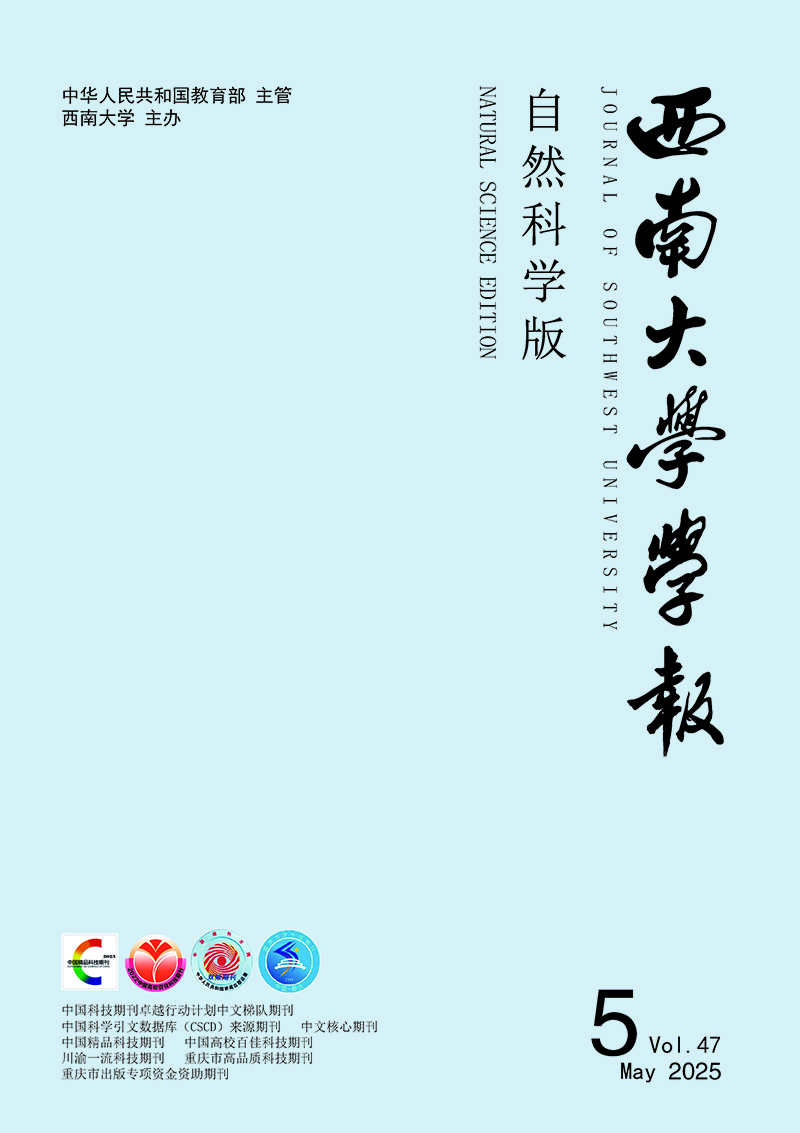


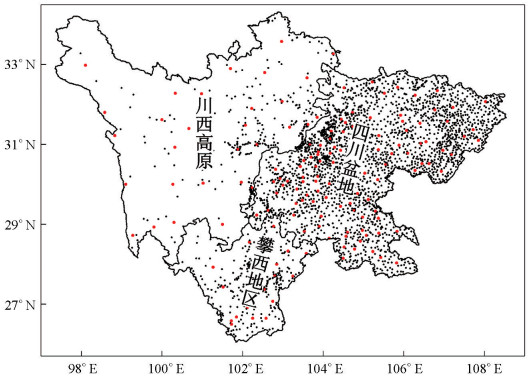


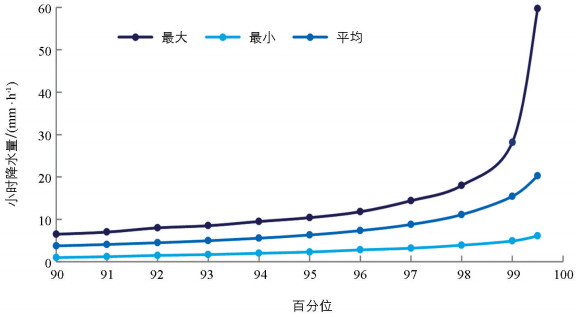
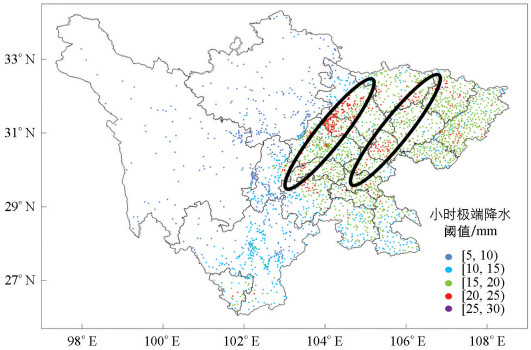


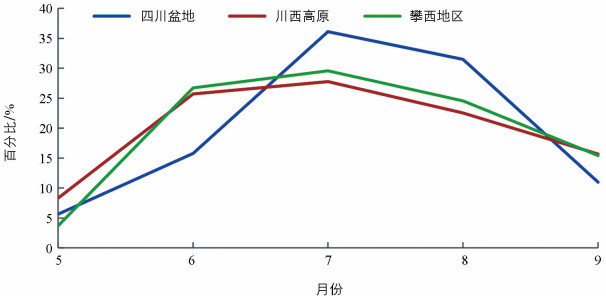

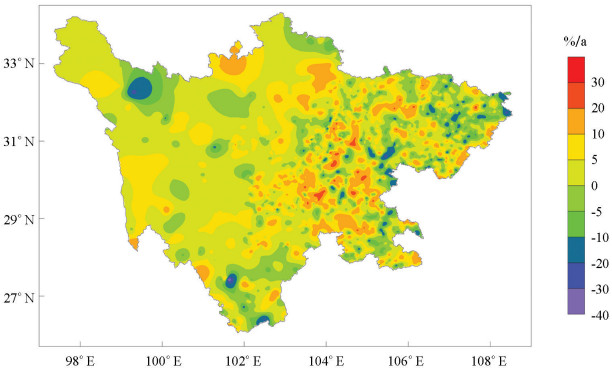
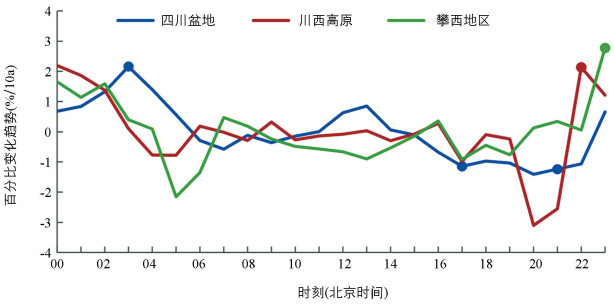
 DownLoad:
DownLoad: